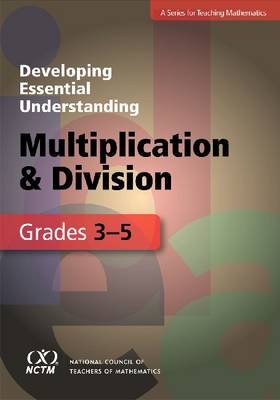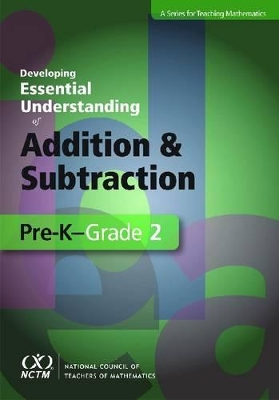Developing Essential Understanding
2 total works
Unpacking"" the ideas related to multiplication and division is a critical step in developing a deeper understanding. To those without specialised training, many of these ideas might appear to be easy to teach. But those who teach in grades 3-5 are aware of their subtleties and complexities.
This book identifies and examines two big ideas and related essential understandings for teaching multiplication and division in grades 3-5. Big Idea 1 captures the notion that multiplication is usefully defined as a scalar operation. Problem situations modelled by multiplication have an element that represents the scalar and an element that represents the quantity to which the scalar applies. Big Idea 2 relates to the algorithms that problem solvers have invented - some of which have become "standard" - for multiplying and dividing. The authors examine the ways in which counting, adding and subtracting lead to multiplication and division, as well as the role that these operations play in algebraic expressions and other advanced topics. The book examines challenges in teaching, learning and assessment and is interspersed with questions for teachers' reflection.
This book identifies and examines two big ideas and related essential understandings for teaching multiplication and division in grades 3-5. Big Idea 1 captures the notion that multiplication is usefully defined as a scalar operation. Problem situations modelled by multiplication have an element that represents the scalar and an element that represents the quantity to which the scalar applies. Big Idea 2 relates to the algorithms that problem solvers have invented - some of which have become "standard" - for multiplying and dividing. The authors examine the ways in which counting, adding and subtracting lead to multiplication and division, as well as the role that these operations play in algebraic expressions and other advanced topics. The book examines challenges in teaching, learning and assessment and is interspersed with questions for teachers' reflection.
Developing Essential Understanding of Addition and Subtraction for Teaching Math in PreK-Grade 2
by Karen Karp, Janet Caldwell, and Jennifer Bay-Williams
Published 30 January 2011
What is the relationship between addition and subtraction? How do you know whether an algorithm will always work? Can you explain why order matters in subraction but not in addition or why it is false to assert that the sum of any two whole numbers is greater than either number?
It is organised around two big ideas and supported by smaller, more specific, interconnected ideas (essential understandings). Gaining an understanding about addition and subtraction is essential as they are the foundation for students' later learning of multiplication and division.
Essential Understanding Series topics include:
It is organised around two big ideas and supported by smaller, more specific, interconnected ideas (essential understandings). Gaining an understanding about addition and subtraction is essential as they are the foundation for students' later learning of multiplication and division.
Essential Understanding Series topics include:
- Number and Numeration for Grades Pre-K-2
- Addition and Subtraction for Grades Pre-K-2
- Geometry for Grades Pre-K-2
- Reasoning and Proof for Grades Pre-K-8
- Multiplication and Division for Grades 3-5
- Rational Numbers for Grades 3-5
- Algebraic Ideas and Readiness for Grades 3-5
- Geometric Shapes and Solids for Grades 3-5
- Ratio, Proportion and Proportionality for Grades 6-8
- Expressions and Equations for Grades 6-8
- Measurement for Grades 6-8
- Data Analysis and Statistics for Grades 6-8
- Function for Grades 9-12
- Geometric Relationships for Grades 9-12
- Reasoning and Proof for Grades 9-12
- Statistics for Grades 9-12

